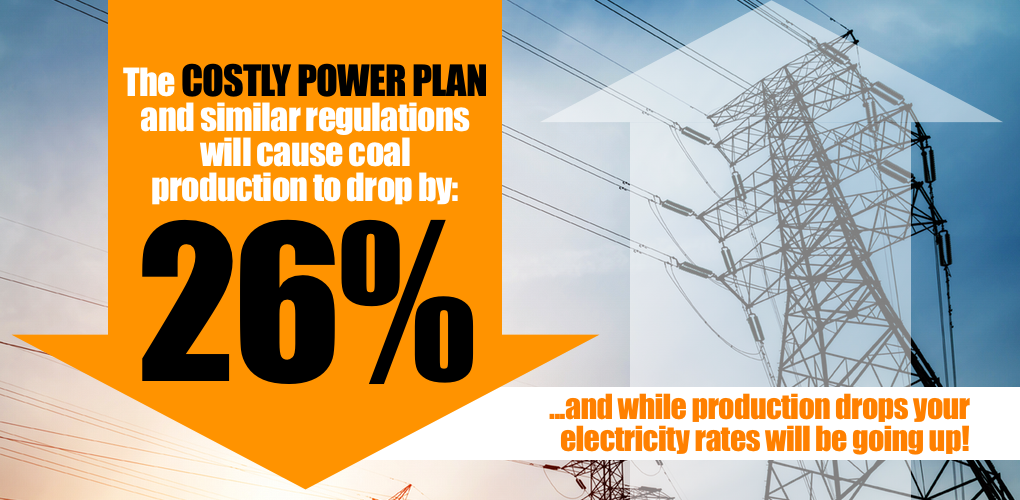
Lost Production Equals Lost Employment from the Clean Power Plan
July 13, 2016
The administration has long blamed coal’s troubles on the marketplace, not on its regulations. In congressional hearings, all the president’s men and women discount the impact of the Clean Power Plan on jobs, coal communities and the grid – even as they claim credit for regulating coal out of the grid when talking to climate activists here and abroad.
Last week the Energy Information Administration became the latest among the energy experts to dispute the official line. In the Annual Energy Outlook 2016, EIA for the first time included the CPP in its reference case. And lo and behold, the forecast shows the rule’s impact on coal production is substantial.
Thanks in part to the CPP, the AEO16 projects a 26 percent drop in U.S. coal production by 2040. A big drop in coal production means a big drop in high-wage employment – the kind the US isn’t creating anymore.
How big a drop? Calculating a standard job loss number per ton of production – and applying that ratio to the production decline EIA projects – we arrive at job losses from miners and contractors totaling 19,500. That’s just the direct “CPP cost,” lost jobs averaging $83,700 a year with good benefits.
Not counted are coal-dependent, supply chain jobs, which could easily bring the CPP “cost” to 100,000 or more.
The story here isn’t the decline of coal. The story is what is behind the decline in an industry, its workforce and the communities it supports. And why we call it “the Costly Power Plan.”
- On July 12, 2016
